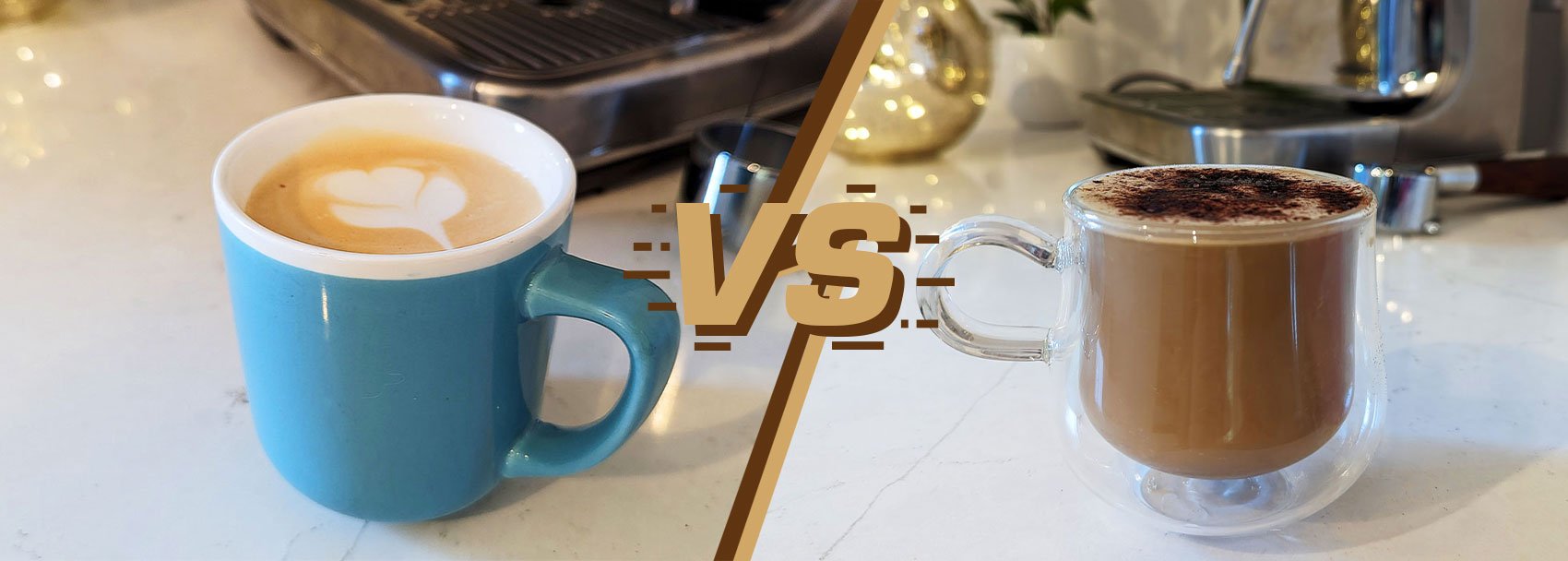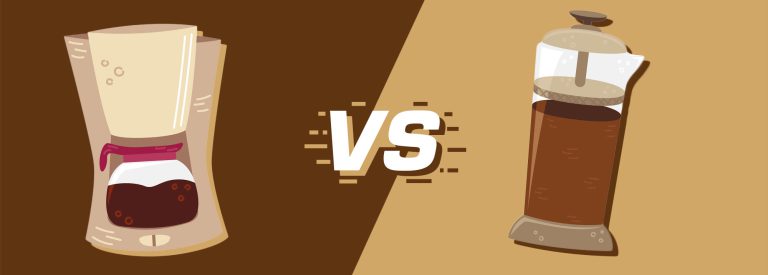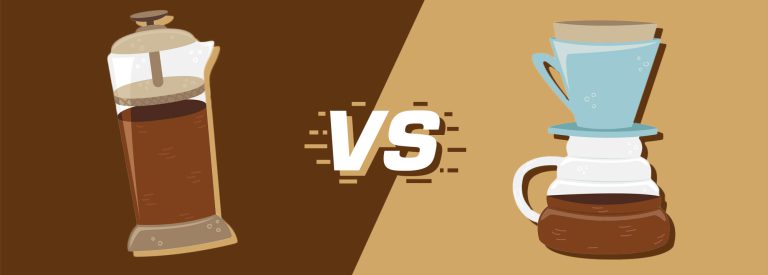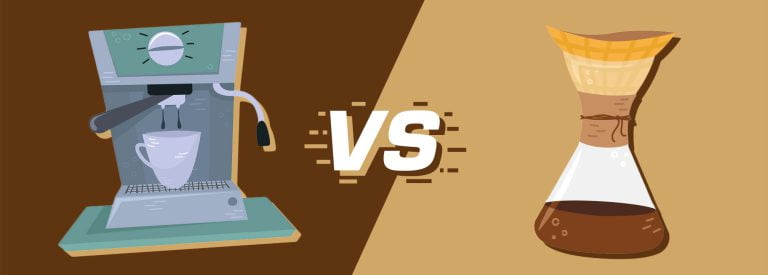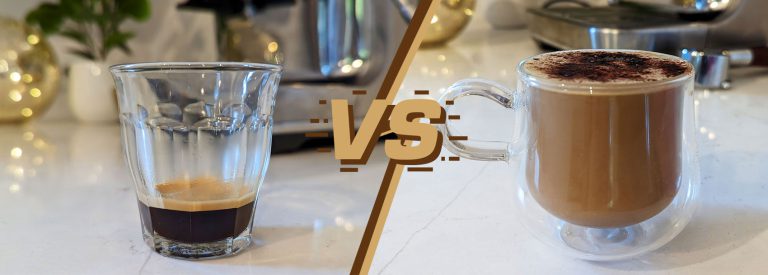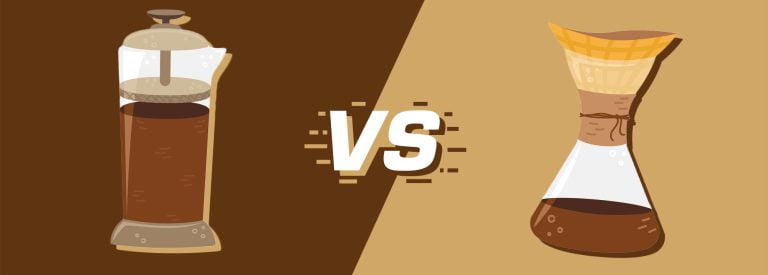Latte vs Mocha: How Chocolate Makes All The Difference
Brewing different espresso-based coffees has been part of my daily routine even before becoming a barista.
This, of course, includes the latte and mocha as well. These drinks are very similar, but there is one major difference that changes everything. If you don’t know what that is, this article is for you 🙂
Key takeaway: What’s the difference between Mocha and Latte?
There are many similarities between mocha and latte. They both combine 1 part espresso with 3 to 6 parts steamed milk with a thin microfoam layer on top. The difference is that mocha blends the espresso shot with chocolate syrup and/or cocoa powder. The latte strikes perfect harmony between the sweet steamed milk and robust espresso, and the mocha takes indulgence one step further, by adding chocolate to the mix.
Let’s get into the details!
What is a Latte?
Latte’s history traces back to Italy, where the term “caffè e latte” directly translates to “coffee and milk” and that’s simply what this drink is, a combination of espresso and steamed milk.

The espresso base follows a 1:2 to 1:3 coffee-to-water ratio, made with 7-9g of ground coffee can for a single shot, or 14-18g for a double shot.
Then combine 1 part espresso with 3-6 parts steamed milk topped with a thin microfoam layer and you have yourself a latte. The volume ranges from 5 to 16 oz (150 to 480 ml), but the standard size is around 240-300 ml. Those extra large sizes are served by the likes of Starbucks, and they use double shots of espresso. They have to, otherwise the 1 oz of coffee taste would get lost in the 15 oz milk they add.
Sipping on a 240 ml serving will set you back 128 calories and provide 60-80 mg of caffeine per espresso shot you use. Your latte’s calorie count also depends on the milk you use. Instead of just full-fat milk, I suggest experimenting with alternatives like soy, almond, and oat milk. That’s how I discovered that I love the flavor of soya latte more than the regular one 🙂
Now to the most important part, how does it taste?
With a high proportion of milk, the latte has a creamy and mild flavor. The robust espresso is mellowed down by the sweetness of the milk, creating a nice “harmony”. Talking texture, it’s smooth and velvety, with the thin microfoam adding a touch of lusciousness to the brew.
Here’s a quick look at how you can make a latte, but you can check out my step-by-step guide on how to make a Caffé Latte for a more detailed recipe.
- Brew a single or double espresso.
- Pour cold milk into a steaming pitcher until it reaches the bottom of the spout.
- Heat and steam the milk until it’s around 160 degrees Fahrenheit, aerating it to create a silky texture with microfoam.
- Pour the steamed milk over your espresso.
- Showcase your barista skills with some latte art if you like.
Next up, I’ll walk you through what the mocha is.
What is a Mocha?
Unlike the latte and macchiato, mocha’s name is not derived from an Italian term. Instead, it got its name from the port city of Mokha in Yemen, which served as a coffee trade hub for 200 years.
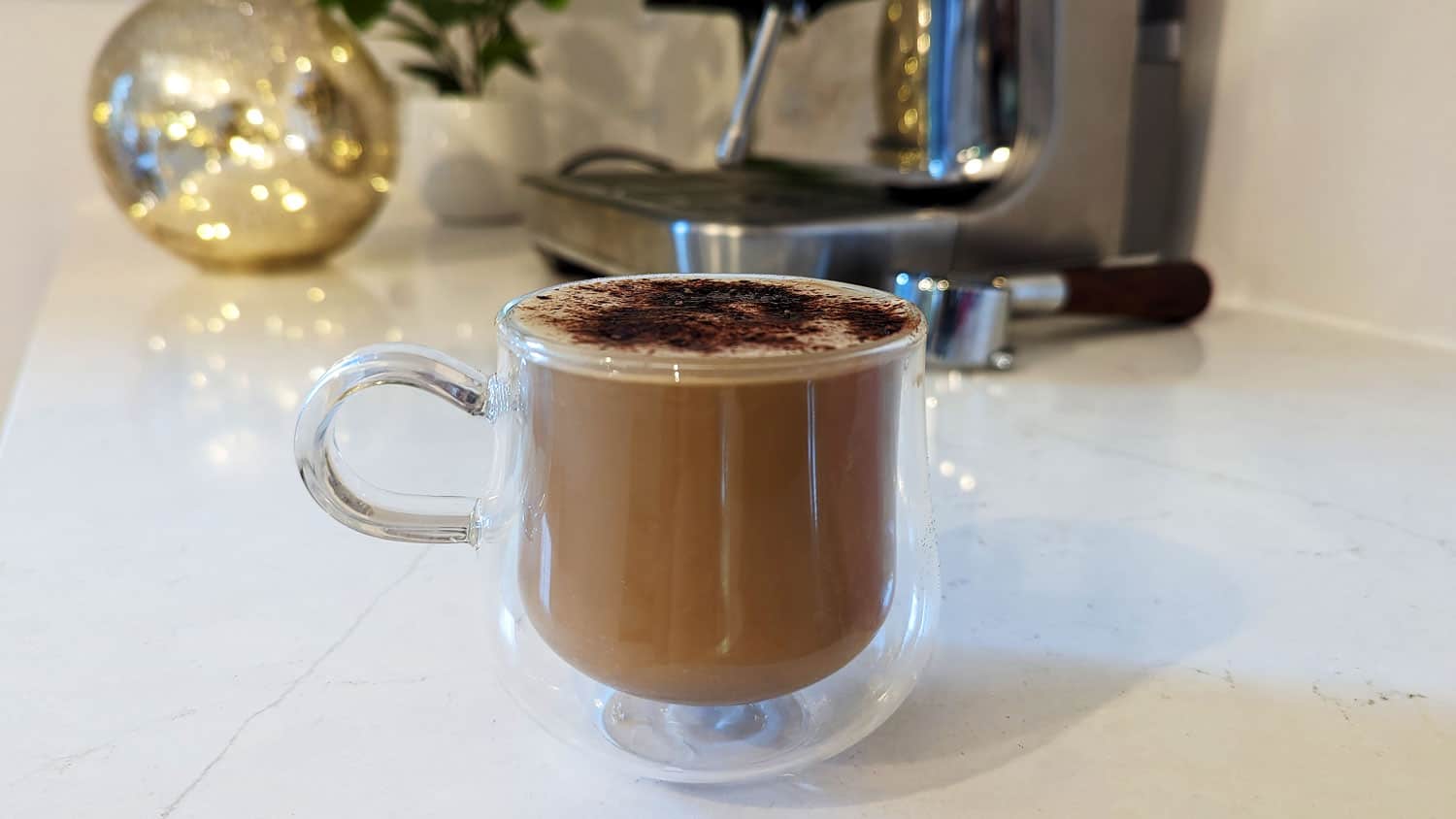
It is basically a chocolatey cousin of the latte. You begin with an espresso just like the latte, but then mix the espresso with chocolate syrup or cocoa powder, and top it with 3 to 6 parts steamed milk, finishing it off with a thin microfoam layer on top. The serving size is the same as the latte.
The added milk and chocolate may raise the brow of the calorie-conscious, so here are the figures: 2 calories per espresso shot and 18 calories per 1 oz (30 ml) whole milk plus the chocolate syrup all add up to around 180 calories per 240 ml mocha serving. As for caffeine, you’ll get 60-80 mg per espresso shot.
With a Caffé Mocha, you’re getting a satisfying blend between the espresso’s intensity and the rich sweetness of chocolate and milk. It’s like a dessert drink with a caffeine kick, especially if you add whipped cream on top.
If you want to master your mocha, you can follow my detailed Caffé Mocha recipe here.
Latte vs Mocha: How Do These Coffees Compare?
Let me break down these two coffee favorites side by side in this comparative table:
| Aspect | Latte | Mocha |
|---|---|---|
| Taste and Texture | Creamy, mild flavor, smooth & velvety texture | Rich blend of bold espresso & chocolate, thick & creamy texture |
| Coffee-to-Water Ratio | 1:2 to 1:3 for the espresso | 1:2 to 1:3 for the espresso |
| Ingredient Ratio | 1 part espresso, 3-6 parts milk, & thin microfoam layer | 1 part espresso, 3-6 parts milk, thin microfoam & chocolate |
| Typical Serving Size | 5 to 16 oz (150 to 480 ml) | 5 to 16 oz (150 to 480 ml) |
| Caffeine Content | 60-80 mg per 1 oz shot | 60-80 mg per 1 oz shot |
| Calories | 128 calories for a 240 ml latte | 180 calories for a 240 ml Mocha |
| Acidity | Low to moderate | Moderate |
| Brewing Difficulty | Home barista | Home barista |
| Bean Roast | Medium roasts; dark roasts also work | Medium-dark roasts |
Here are comparisons of the latte and mocha’s key characteristics in detail:
- Ground Coffee Weight & Ratios: Latte and mocha are similar, starting with an espresso base that follows a 1:2 to 1:3 ratio and uses 7g for a shot or 14g for a double shot (9g and 18g respectively for third-wave coffee).
Both also incorporate 3 to 6 parts of steamed milk per 1 part espresso. The only difference is that with mocha, you combine the espresso and chocolate first before adding the milk. - Taste: Latte offers a harmony between the bold espresso and sweet, creamy milk, resulting in a milder flavor. Mocha, on the other hand, adds the distinct sweetness of chocolate with the blend of coffee and milk.
- Volume, Calories, & Caffeine: Both coffees come in 5 to 16 oz servings, with the same 60-80mg caffeine per espresso shot. They differ in calories though, with mocha having more at 180 calories per 240ml serving while the latte only has 128 calories.
- Bean Roast: For both the latte and mocha, I like medium to medium dark roasts best as they blend well with the milk. Sometimes, I go for dark roasts when I crave a more pronounced coffee in my latte.
- Steamed Milk: Lattes and mochas have steamed milk with a thin microfoam layer. Full-fat milk is the norm, but alternatives like soy, almond, or oat milk also work.
If you need help with the milk in your coffee, you can follow my guide on how to steam silky milk for your brews. - Serving Suggestions: I’ve always found soy milk to be a fantastic pairing with my latte, not for the calories, but purely for taste. As for mochas, they’re almost dessert-like, with chocolate enhancing the blend of espresso and milk. It’s a treat for anyone with a sweet tooth.
As you can see, latte and mocha are pretty similar in composition, but the chocolate in the mocha makes a big impact.
Since both of these drinks start strong with your espresso base, choosing the best espresso coffee beans this 2024 can go a long way for these drinks.
Which do you like better?
If I had to choose between these two brews, I must say I have a soft spot for soya lattes. The mocha, to me, is too reminiscent of chocolate milk. But that’s not to say I won’t have one from time to time.
That’s just my two cents though. How about you, which espresso-based beverage do you prefer? Let me know in the comments section below.

